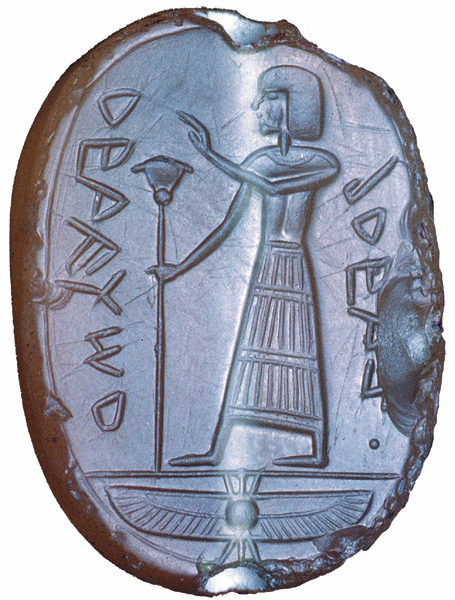Image Details

The Shlomo Moussaieff Collections, London
Walking like an Egyptian, the figure on this late-eighth century B.C. seal is actually Israelite. Inscribed in Old Hebrew, the seal reads “Belonging to Abdi, servant of Hoshea,” indicating that it was once the official stamp of a minister of the last king of northern Israel, Hoshea, who ruled from 732 B.C. until the Assyrians conquered Israel in 722 B.C. Made of orange chalcedony, the seal is an inch high, half an inch wide, a third of an inch thick and is perforated at the top and bottom, possibly so that it could be worn around the owner’s neck, on a string. The seal’s Egyptian style—notably the figure’s wig, profile, stance, skirt and papyrus scepter, as well as the use of the winged sun-disc, at bottom, an Egyptian symbol of royalty—suggests that Israel borrowed its royal iconography from its neighbor. This borrowing probably occurred during the tenth century B.C., the formative period of the Israelite monarchy, when Israel had close relations with Egypt.
